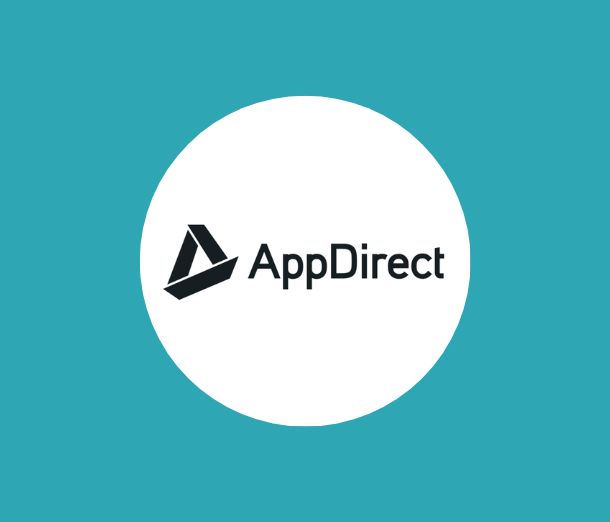What is Content Creation?
Content creation is the foundation of all modern digital marketing efforts. It’s defined as the process of conducting research, generating strategic ideas, crafting those ideas into high-value collateral and then promoting those pieces to a target audience. Digital content takes many forms, including web pages, blogs, infographics, videos and social media posts.
1. Content Creation &
Digital Marketing
The main objective of content creation is to attract new and returning customers. Inbound marketing strategies give away high-value digital media for free. This content establishes your brand’s thought leadership while providing readers with the information they need to make a purchasing decision.
Brands use different types of content at each stage of the marketing funnel. At the top of the funnel, search engine optimized (SEO) blogs organically attract new visitors. Mid-funnel landing pages keep readers engaged, and highly detailed content like white papers and eBooks drive conversions.
Why is Great Content So Important?
Millions of pieces of content are published online every single day. To stand out and make an impact on your customers (and potential customers), your content needs to be of a high quality. That means it’s not only written and designed well, but also that it’s developed with the needs of your audience in mind. The difference between high-quality and poor-quality content is stark — great content rises to the surface while poor content disappears into the void of the internet.
The amount of effort you put into your brand’s content is directly proportional to the value you get from it. High-quality content will help you:
- Stand out as an authoritative thought leader.
- Grow your subscribers and email list.
- Increase your website traffic.
- Keep your customers engaged.
- Generate revenue.
Deep Dive
Doubling Dynaway’s Site Traffic: How We Pulled It Off
How We Wrangled Dozens — and Counting — of SQLs for CFGI
1 Blog Post. 6 Months. $30,000 Value: THIS Is SEO
2. Types of Content
Content comes in all shapes and sizes. It can be a piece of writing, audio, video or an image. Some of the types of content you’ll find in marketing include:
- Written content: Blogs, SEO articles, white papers, eBooks, emails, social media posts.
- Imagery: Infographics, GIFs.
- Audio: Podcasts, audiobooks.
- Video: Animations, webinars, talking heads.
We’ll take a deeper look at some of the most common forms of content marketing, but first let’s understand how SEO plays a role in content creation.
We’ll take a deeper look at some of the most common forms of content marketing, but first let’s understand how SEO plays a role in content creation.
Content Creation for SEO
When you create a piece of content, you’re always making it for two main audiences: your customers and search algorithms. The latter is a complex technology that retrieves information and matches patterns. Modern search engines like Google are incredibly intricate. In the early days of Google’s history, content creators could fill their websites with keywords to get their pages to shoot to the top of search engine results pages (SERPs).
These days, it’s not so simple to rank highly — especially for lucrative keywords that signal an intent to make a purchase. For example, a keyword phrase like “pizza delivery near me” signals that the searcher is trying to find a source of delicious pizza nearby. Google’s search algorithm will take into account the user’s location as well as a variety of other factors to determine which web pages to display first.
This process gets more complicated when you consider B2B sales, where the searcher is likely making a decision based on more than just the vicinity of the nearest vendor. In that case, you would need content tailored for each stage of the buyer’s journey, beginning with their preliminary online search. Top-of-funnel content such as blog posts and videos should be search engine optimized so that users can easily find the information they are looking for.
When creating content, ask yourself these questions to help you focus on a specific search intent:
- What information would be most valuable to my target audience?
- What sets my brand apart from the competition?
- What would convince my audience to make a purchase today?
- How can I help my audience reach the next stage of the decision-making process?
While modern search engines are sophisticated enough to recognize the intention of your content, you can leverage other on-page tactics to increase your rankings. When writing for the web, such as creating blogs and product descriptions, consider how you structure your content with HTML. For example, using title tags (H1, H2, H3, etc.) will help search algorithms to identify topics and subtopics.
Content Creation for Social Media
While social media posts have a much shorter lifespan than other types of content, they are extremely valuable. In fact, more than half of surveyed marketers believe social media can drive customer engagement and lead to increased sales.
Plus, social media can augment your other content marketing efforts. For example, you can create content that promotes your blog or teases larger assets like eBooks. For B2C brands, social media platforms are often the first place new customers learn about products, making it ideal for lending social proof to marketing campaigns.
One of the most important points to remember when creating social media content is that you have a very short amount of time to grab your reader’s attention. Think about how long it takes to swipe up on your newsfeed — that’s all the time you have to make an impression. Use relevant hashtags and eye-catching visuals to engage viewers before they move on.
Website Content Creation
When developing content for your website, there’s a lot to think about. You need to do your research to understand how your customers make decisions and what kind of content appeals to them the most.
Together, all of your website content should work together strategically to form a lead generation engine. That means creating a website that is properly indexed to provide maximum exposure to search engines. In addition, you’ll need high-quality content that provides upfront value to buyers and decision-makers.
A website on its own will only get your brand so far, however. You also need to promote your content through social media channels, influencers and emails. Those activities, in addition to great SEO, will drive new and returning customers to your site where your blogs and landing pages will keep them moving down the sales funnel.
Content Formats
As we mentioned above, content is a broad term that can take many forms. Plus, new forms of content arise alongside new technologies. For example, the first blog appeared in 1994, while the first social media site launched in 1997. Apps like TikTok have shown marketers that there is still room for innovation when creating content.
For promoting brands, some of the most effective content formats include:
- Infographics: Best for visualizing processes or displaying statistics, infographics are valuable top-of-funnel content that provide readers with quick, actionable insights.
- Blogging: Blogs and articles often form the heart of content marketing campaigns because they are bite-sized enough for readers to consume in a single sitting while also providing the time and space to dive deeply into a particular topic.
- Podcasts: Audio formats like podcasts enable brands to add a personal touch to their web presence. Plus, they’re great for repurposing written content.
- Videos: Animations, interviews and other video content is highly engaging for both B2C and B2B customers.
- Case studies: Providing third-party evidence of your brand’s value, case studies offer decision-makers useful information.
- Webinars: This type of visual content provides your audience with detailed information on a single topic while giving viewers the opportunity to ask questions and interact with you directly.
- White papers: Another form of written content, white papers typically involve more research than the average blog
Deep Dive

14 Types of Visual Content To Use in Your Content Marketing Strategy
If you want to stand out from the crowd and appeal to more readers, add these visuals to your content marketing strategy.
3. Keyword Research
Performing keyword research is one of the best ways to truly understand what type of content best appeals to your target audience. In fact, keyword research is usually one of the first steps in creating content that drives leads. Why? Because when you know which keywords your audience is searching for, you can fine-tune your content to meet the most common search intents.
At worst, keyword research will confirm what you already know about your audience. At best, it can lead to insights that boost customer engagement and increase conversions. Popular tools like the Google Ads Keyword Planner can help you uncover useful phrases, topics and questions that your customers are searching for online. These ideas will help you generate high-quality content that appeals to your audience.
Protip: We’re not kidding around here. If you’re not performing keyword research, you can’t really know what your audience is looking for online. Don’t leave your brand’s success up to gut instinct alone. Check out our guide below for a step-by-step, scientific approach to keyword research.
Using Keyword Research to Optimize Your Content
The internet may not exactly be alive, but it’s always evolving. Search engine algorithms are updated constantly, altering which pages get preferential treatment on SERPs. Monitoring and optimizing your content are a little like working out at the gym. You can’t do 10 pull-ups today and stop. If you want to get stronger, you have to keep up the work.
In short, website content optimization involves tweaking and updating your pages to make it more appealing to your customers and search algorithms. For example, say you have a blog post that is well-written, but not performing as well as you’d like. Keyword gap research can show you which topics are missing so you can add them in.
Deep Dive

How to Do Keyword Research
This 8 step guide is the result of ten years of refined keyword research processes, which have resulted in 5x page 1 keyword rankings. For experts & newbs alike.
4. The Content
Creation Process
While there’s no one standard way to create content, there are some tried and tested methods that have proven to be successful. An optimized creation process provides creators with room for creativity while still adhering to the best practices mentioned above. Ultimately, an ideal content creation process gets content moving in a timely manner, producing an end product that gets results.
How to Optimize Your Content Creation Process
Before we get into the step-by-step process of creating excellent content, let’s take a high-level overview of the process. The first step in developing and implementing a process that suits your brand’s needs is to consider your goals. Formulate a list of business goals that your content marketing strategy will support. Examples of common goals include:
- Lead generation.
- Increased conversions.
- Improved brand reputation.
- Increased brand awareness.
Keep this list close at hand, and make sure all of your content creators understand it. At every stage of the creation process, you can look at your list to confirm that you’re on the right track. If a piece of content or particular process doesn’t serve your goals, it’s a sign that you may need to revisit the drawing board. Check out our 10-step guide to optimizing the content-creation process to learn more.
A Step-by-Step Workflow for Creating Effective Content
Ultimately, your content creation workflow should align with your unique business. Start with these steps and make them your own:
- Review your goals. Always use your business goals to frame your content ideation process. Return to them frequently throughout the process.
- Determine where your content will fit in the buyer’s journey. Look at your buyer journey and think about where your content should fit. Top-of-funnel content should seek to answer questions and demonstrate your thought leadership. Bottom-of-funnel content will be more detailed and more focused on facilitating a purchase decision.
- Generate topic ideas. Sometimes your first idea will be the one — but that’s not always the case. Brainstorm a number of ideas and consider the benefits and challenges of each. If possible, bounce your ideas off your colleagues to get a fresh perspective.
- Perform research. With a basic idea of the content you want to create, perform some initial research. This may include using SEO tools to identify keyword gaps and commonly asked questions. Depending on your topic, you may also need to conduct subject matter expert (SME) interviews.
- Choose a format and create the content. Will you write a blog, create an infographic or record a podcast? Think about how your customers prefer to consume content as well as how best to present your information. You’ll likely need to conduct further research throughout the creation process.
- Publish and promote your content. Once you publish your content, you can’t assume that your customers will find it. Use social media channels and email to spread the word and attract new and returning customers to your content.
- Review your content’s performance. Use analytics tools to measure the success of your content. For blog articles and landing pages, it could take up to 3 months before you start seeing real results, so be patient.
- Revise and optimize your content. If your content isn’t performing up to your expectations, perform an analysis to determine what you need to do to improve it. You might need to answer more questions, cover more topics or use more relevant keywords.
Protip: If it feels like your well of creativity is running dry, consider repurposing some of your older content. For example, you can take an old series of blogs, update the content as needed, and republish the content as an eBook. For more ideas, learn about the importance of content repurposing and how to leverage your existing assets in the future.
How to Set Up and Plan Your Editorial Calendar
Consistency is key to any content marketing strategy. The rate at which you publish content will depend on your brand and your audience’s expectations. If you’re just getting started, it’s probably best to begin at a low cadence that you can reasonably stick to — you can always ramp up. If you start with a brisk cadence, such as publishing five blogs away, you could burn out quickly.
Once you’ve established a pace, you’ll want to create an editorial calendar. Your calendar will help you visualize your schedule so that you can accurately plan each phase of your creation process. At a glance, your calendar should provide you with essential information such as:
- Content titles.
- Content types.
- Publish dates.
- Statuses.
It’s a good idea to have a mix of evergreen and timely content so that you’re not always struggling to keep up with the news cycle. You can create evergreen content well in advance and publish it later, for example. Staying a month ahead of your publishing dates will give you a cushion in case you get behind.
When setting up your calendar, consider using your marketing goals as a guide. For example, if you have three main goals, you might alternate your publishing schedule to support each goal equally.
Check out our favorite content planner tools to make your process more efficient.
How to Come Up with New Content Ideas
Brainstorming creative content ideas is not always an easy feat. Sure, when you’re fired up about your project, you might find that ideas flow faster than you can use them. But your business should run at the same speed even when you’re feeling creatively drained.
For those times when you need to generate content ideas but you’re just not feeling it, you need a methodology for topic ideation. But beware — fatigue can lead to content creator apathy, a dangerous condition where you produce low-effort content simply to fill your editorial calendar. You want to avoid this at all costs, or your target audience could think that your brand is slipping.
As always, keep your list of business goals close at hand. Fresh content signals to search engines that your website is active and useful, and new ideas will keep your readers interested. Use every tool and channel available to discover new ways of generating ideas that push your brand to the next level.
And when you’re really struggling to get going, listen to the advice of other successful content creators. Sometimes you just need to step away from your computer and take a walk. Performing an unrelated activity can help your unconscious mind reset and approach the task from a new angle.
Content Creation Tools and Templates
Content creators are only as good as their ideas — and their tools. With the right resources, you can perform better research and develop high-quality content. In addition, content templates can speed up your creation process, enabling you to spend more of your time innovating.
There are several categories of tools to consider:
- Content research tools (Google trends, BuzzSumo, etc.)
- SEO tools (MarketMuse, SEMrush, etc.)
- Planning and management tools (AirTable, HubSpot, etc.)
- Analytics tools (Google Analytics, Kissmetrics, etc.)
- Social media tools (BuzzSumo, HootSuite, etc.)
- Writing tools (Google Docs, Unicheck, etc.)
- Image tools (Adobe Photoshop, Shutterstock, etc.)
- Design tools (Adobe Illustrator, Venngage, etc.)
- Video tools (Adobe Premiere, Magisto, etc.)
- Email tools (Mailchimp, Pardot, etc.)
Do you need to have every type of tool listed above? Not necessarily … but yes. And here’s why: Content creation is one of the most important and valuable ways to grow your business; at the same time, content creators face an incredibly competitive field.
You can certainly manage a content strategy without a planning tool, but you’ll need to spend more time manually scheduling and posting your content. In the same way, you don’t necessarily need top-tier design software, but you’ll need top-notch design skills to make your visuals pop.
Even if you have a winning strategy, a competitor with better tools could still beat you. They’ll be able to move faster and get better results with less effort. Of course, digital tools can be costly — though there are free options available. Analyze your content creation process and identify your biggest barriers.
5. What Does the Ideal Content
Team Look Like?
Some brands have been built on the shoulders of one-person powerhouses who can crank out content, strategize, analyze and influence. Most brands, however, are built by teams. Running an effective content marketing campaign requires lots of hard work and energy. And while content marketers often wear many hats, it’s ideal to have a team that can evenly share the burden of producing effective content again and again.
So who do you need on your content team? Start with the major roles:
- Strategists: Develop content strategies based on business goals and market trends.
- Writers/editors: Produce copy, conduct topic research and generate ideas.
- Graphic designers/illustrators: Design layouts, create images and develop brand styles.
- Social media managers: Create social content, schedule posts and monitor results.
- Videographers: Produce videos from custom and stock footage and develop animations.
- Project managers: Keep projects moving forward by managing deadlines and identifying barriers to success.
- Sales professionals: Ensure marketing efforts are aligned with sales goals, perform lead scoring and develop buyer personas.
- Influencers: Lend credibility to brands, connect with customers and provide thought leadership.
Should You Outsource Your Content Creation?
Creating your brand’s content on your own is a tall order. Small businesses often lack the resources to hire in-house content creators. Even enterprises can rely on outside help to fine-tune their approach to marketing.
But do you hire freelancers, or do you go with a content marketing agency? First, it’s important to understand the benefits and limitations of each option. Check out our comprehensive guide to content outsourcing below to decide for yourself.
Deep Dive

Who is Writing my Content? Facts and Myths about Outsourcing Content Creation
Life as a web content writer is a commitment to discipline, good habits and creative self-care.
6. How Do You Know
if Your Content is Working?
All of this talk about content creation is for nothing if you don’t measure your success. You need to use analytics tools to measure the effectiveness of each piece of content you put out into the world. This will not only show you what you’re doing right but also uncover opportunities for improvement. You can always revise and re-optimize until your content performs as expected.
Keep in mind that not all metrics and KPIs are equally important, however. We’ve created a detailed guide (below) that explains how to measure your content marketing effectiveness. It’ll help you understand the difference between vanity and value, plus give you all the KPIs you need to properly analyze your content.
Deep Dive
7. Learn More About Content Creation
Marketers live in a content-centered universe; now it’s time to create your corner of it.
Looking for help with content marketing? Check out some of the services we offer:
The Content Marketer
Get the latest content marketing updates delivered directly to your inbox with our weekly newsletter.
Thank you for signing up for The Content Marketer!






















